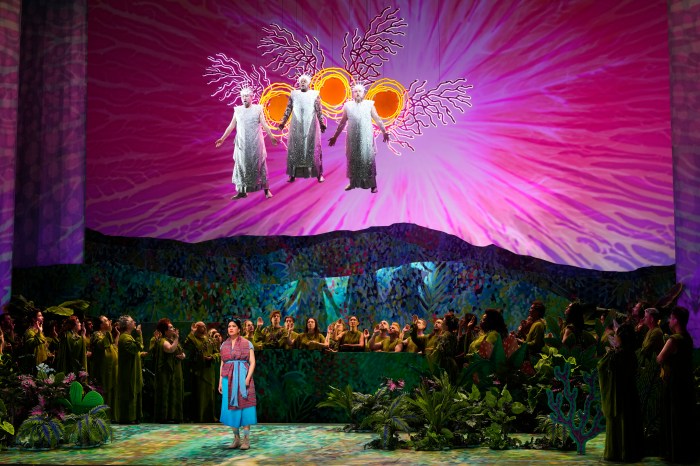Writer-director Paul Haggis has a pair of Oscars, his name attached to some of the most successful movies of the past decade-plus (“Crash,” “Casino Royale”) and experience in television dating back to the late ’70s.
The man co-created “Walker Texas Ranger,” for heaven’s sake.
So when you hear him talk about how difficult he found a project, you know that says something.
His latest movie “Third Person,” a romantic ensemble piece starring everyone from Liam Neeson to Mila Kunis and James Franco and set across three different cities, is twisty and complicated and filled with unabashed flourishes.
It’s intensely personal, the sort of film you’ll love or hate, and it took Haggis a long time to get right. The filmmaker spoke with amNewYork about the movie, which opens Friday.
What was so hard about “Third Person” and when did you know you had figured it out?
It was hard because I purposefully decided to allow the characters to take me where they wanted to go rather than structuring it to start. And they often took me to blind alleys or Michael — Liam’s character — would take me to places I didn’t want to look at, didn’t know why they were taking me there. That process, it’s a really dumb way to write, but it’s the only way I could have written this piece.
Are you satisfied with where the film is now?
No, I’m never satisfied. No, please. I woke up last night with the thought of a scene I should write and something I should’ve shot. Absolutely, no, no. I would still be re-cutting this thing now. I would still be re-cutting “Crash” and “In the Valley of Elah.”
So how do you know when it’s ready for audiences?
It’s tough. Especially when you’re in the editing process because I took a cut to the Toronto Film Festival that I wasn’t completely happy with. But I took the best advice of some people I really respected. And then afterward I said, “I’ve got to open it up, I’ve got to change it. I put things back in that, ‘Yes, I understand you want me to take them out because it’s confusing, but it’s supposed to be confusing. And so I’m putting it back in and the audience will be confused or [they won’t] but hopefully they’ll have an emotional reaction.
Why set the film in Rome, Paris and New York?
I very much wanted this to be a romantic piece. And I wanted it to be beautiful. And I wanted it to be set in three cities. Automatically, you think, ‘It’d be great to be in love in those cities.’ But also cities where these characters could not possibly meet, so that if something starts happening, you have to ask yourself, ‘That can’t happen. What’s really happened? Why?’
I’m sure there’s always an element of yourself in anything you write or direct. This feels especially personal though.
Always. This one particularly so. This one, I was really exploring questions that I couldn’t answer, often about relationships that I had had. Then, of course, you fictionalize them, you place them in settings and put those questions in characters that you wouldn’t recognize, or I wouldn’t recognize. Absolutely, this is a very personal movie.
Do you ever get used to putting yourself out there?
No. It’s always terrifying. But it’s my job, right? It’s my job. If I didn’t want to do that I should go back to construction.

















